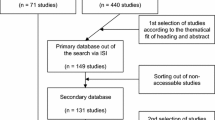Abstract
Anthropologists have long documented rituals that reinforce the social and spiritual aspects of killing and eating animals. The historical processes of modernization, industrialization, and the spread of market capitalism have driven many such references to sacredness out of meat production in North America, leading dominant social relations around meat into what Max Weber famously termed “disenchantment.” In this article, I argue that re-enchanting discourses are one technique being used to develop the alternative production models of ethically raised meat—animals raised for human consumption with priority on sustainability and well-being. As people redesign a food system that resists the meat industry’s churn of pigs, cows, and chickens from feed lot to factory, they are not just rearranging the material structures of production. They also foster discourses and practices of sacredness, mutuality, and wonder. Ethical meat advocates use these discourses particularly to make sense of conflicts regarding the non-commodifiable nature of mortality and harmony. This article draws on ethnographic research among Southern Wisconsin butchers, farmers, and customers as well as public discourse analysis to trace meaning-making strategies that powerfully counter the commercial meat industry by re-enchanting meat.
Similar content being viewed by others
Notes
In accordance with the IRB, participants were given the option to use a pseudonym or their own first name. Published sources are referenced by name.
Note that the term ethical meat is sometimes used to describe vegan meat alternatives and lab-based cultured meat products, which are not covered here.
Abbreviations
- MOSES:
-
Midwest Organic and Sustainable Education Service
References
---. 2014. Cooked: a natural history of transformation. New York: Penguin.
American Meat Institute, and Sealed Air. 2016. How interested are you in locally sourced meat and poultry? [Graph]. In Statistica. https://www.statista.com/statistics/300058/meat-market-us-consumers--interest-in-locally-sourced-meat-and-poultry/?locale=en. Accessed 27 March 2023.
Bali, Niti. n.d. Expansion lifestyle. Farm to fork meat riot. https://www.farmtoforkmeatriot.org/food-church. Accessed 12 November 2021.
Barlett, Peggy F. 2008. Reason and reenchantment in cultural change. Current Anthropology 49 (6): 1077–1098.
Berry, Wendell. 1996. The unsettling of America: culture & agriculture. Revised edition. San Francisco: Counterpoint.
Bjorkdahl, Kristian, and Syse Karen Lykke. 2021. From ritual loss of life to loss of living rituals: On judicialization of slaughter and denial of animal death. In Changing meat cultures: Food practices, global capitalism, and the consumption of animals, eds. Arve Hansen and Karen Lykke Syse, 17–34. New York: Rowman & Littlefield.
Block, Fred. 1990. Postindustrial possibilities: a critique of economic discourse. Berkeley: Univ of California Press.
Bock, B., M. Van Huik, F. K. Eveillardc, and A. Dockes. 2007. Farmers’ relationship with different animals: the importance of getting close to the animals. The International Journal of Sociology of Agriculture and Food 15 (3): 108–125.
Browne, Katherine. 2009. Economics and Morality: Introduction. In Economics and morality: Anthropological approaches, eds. Katherine Browne and Lynne Milgram, 1–40. Lanham, MD: AltaMira Press.
Cairns, K., and J. Johnston. 2018. On (not) knowing where your food comes from: meat, mothering, and ethical eating. Agriculture and Human Values 35: 569–580.
Certifiedhumane.org. n.d. Our mission. Certified humane. https://certifiedhumane.org/. Accessed 13 February 2023.
Clark, Melissa. 2019. The vegetarians who turned into butchers. The New York Times, 6 August. Retrieved from https://www.nytimes.com/2019/08/06/dining/butchers-meat-vegetarian-vegan.html.
Curry, Janel. 2008. Globalization and the problem of the nature/culture boundary. In After modernity?: secularity, globalization, and the re-enchantment of the world, ed. James K. A. Smith, 183–202. Waco, TX: Baylor University Press.
Dahlberg, Kenneth. 1993. Regenerative food systems: broadening the scope and agenda of sustainability. In Food for the future, ed. Patricia Allen, 75–102. New York: Wiley.
Davis, Camas. 2018. Killing it: an education. New York: Penguin.
DeLind, Laura B. 2011. Are local food and the local food movement taking us where we want to go? Or are we hitching our wagons to the wrong stars? Agriculture and Human Values 28 (2): 273–283. https://doi.org/10.1007/s10460-010-9263-0.
Dimitri, Carolyn. 2010. Marketing us organic foods: recent trends from farms to consumers. In Emerging issues in the u.s. organic food industry, ed. Trevor J. Cochran, 32–62. Hauppauge, NY: Nova Science.
Eder, Klaus. 1996. The social construction of nature: a sociology of ecological enlightenment. London: SAGE Publications.
Efstathiou, Sophia. 2021. Meat we don’t greet: How ‘sausages’ can free pigs or how effacing livestock makes room for emancipation. In Changing meat cultures: Food practices, global capitalism, and the consumption of animals, eds. Arve Hansen and Karen Lykke Syse, 165–84. New York: Rowman & Littlefield.
Eiss, P. K. 2002. Hunting for the virgin: meat, money, and memory in tetiz, yucatán. Cultural Anthropology 17: 291–330.
Ferry, D. 2011. Slaughterhouse shortage stunting area’s eat-local movement. The New York Times Online, 7 April. Retrieved from http://www.nytimes.com/2011/04/08/us/08bcslaughterhouse.html?pagewanted=a.
Geertz, Clifford. 1973. The interpretation of cultures: selected essays. New York: Basic Books.
General Convention. 2012. Journal of the General Convention of the Episcopal Church, Indianapolis. New York: General Convention.
Govindrajan, R. 2015. ‘The goat that died for family’: animal sacrifice and interspecies kinship in India’s central Himalayas. American Ethnologist 42: 504–519.
Herzog, Hal. 2011. Some we love, some we hate, some we eat: why it’s so hard to think straight about animals. New York, NY: Harper Perennial.
Hinrichs, C., and Clare. 2003. The practice and politics of food system localization. Journal of Rural Studies 19 (1): 33–45. https://doi.org/10.1016/S0743-0167(02)00040-2.
Hobgood-Oster, Laura. 2010. The Friends we keep: unleashing Christianity’s Compassion for Animals. Waco, TX: Baylor University Press.
Janssen, Brandi. 2017. Making local food work: the challenges and opportunities of today’s small farmers. Iowa City: University Of Iowa Press.
Jenkins, Richard. 2000. Disenchantment, enchantment and re-enchantment: Max Weber at the millennium. Max Weber Studies 1 (1): 11–32.
Johnston, Josée, Anelyse Weiler, and Shyon Baumann. 2022. The cultural imaginary of ethical meat: a study of producer perceptions. Journal of Rural Studies 89: 186–198.
Kingsolver, Barbara. 2003. Foreword. In The essential agrarian reader: the future of culture, community, and the land, ed. Norman Wirzba, ix–xvii. Lexington, KY: University Press of Kentucky.
Latour, Bruno. 1993. We have never been modern. Cambridge, MA: Harvard University Press.
Lewis-Williams, J. D., and M. Biesele. 1978. Eland hunting rituals among northern and southern San groups: striking similarities. Africa 48 (2): 117–134.
Loughnan, Steve, Nick Haslam, and Brock Bastian. 2010. The role of meat consumption in the denial of moral status and mind to meat animals. Appetite 55 (1): 156–159. https://doi.org/10.1016/j.appet.2010.05.043.
Lundström, M. 2019. ‘We do this because the market demands it’: alternative meat production and the speciesist logic. Agriculture and Human Values 36: 127–136.
McCarraher, Eugene. 2019. The enchantments of mammon: capitalism as the religion of modernity. Cambridge, MA: Belknap Press.
Merchant, Carolyn. 1990. The death of nature: women, ecology, and the scientific revolution. New York: HarperOne.
Miele, Mara, and Bettina Bock. 2007. Competing discourses of farm animal welfare and agri-food restructuring. International Journal of Sociology of Food and Agriculture 15 (3): 1–7.
Millard, Ann V., and Jorge Chapa. 2013. Apple pie and enchiladas: latino newcomers in the rural midwest. Austin, TX: University of Texas Press.
National Restaurant Association. 2018. Leading trends in culinary themes on restaurant menus in the United States in 2018 [Graph]. In Statistica. https://www.statista.com/statistics/293972/leading-trends-in-culinary-themes-on-restaurant-menus-us/?locale=en. Accessed 27 March 2023.
National Agriculture Statistics Service. 2016. Overview of the united states slaughter industry. USDA. https://usda.library.cornell.edu/concern/publications/b5644r52v.
Pilgrim, Karyn. 2013. ‘Happy cows,’ ‘happy beef’: a critique of the rationales for ethical meat. Environmental Humanities 3 (1): 111–127. https://doi.org/10.1215/22011919-3611257.
Polanyi, Karl. 1957. The great transformation. Boston: Beacon Press.
Pollan, Michael. 2002. An animal’s place. New York Times Magazine 10 November: 58.
Rothgerber, Hank. 2015. Can you have your meat and eat it too? Conscientious omnivores, vegetarians, and adherence to diet. Appetite 84 (January): 196–203. https://doi.org/10.1016/j.appet.2014.10.012.
Rozin, Paul. 1997. Why we eat what we eat, and why we worry about it. Bulletin of the American Academy of Arts and Sciences 50 (5): 26–48.
Sahlin, Kajsa Resare, and Joanna Trewern. 2022. A systematic review of the definitions and interpretations in scientific literature of ‘less but better’ meat in high-income settings. Nature Food 3 (6): 454–460.
Sahlins, Marshall. 1990. Food as symbolic code. In Culture and society: contemporary debates, eds. Jeffrey C. Alexander, and Steven Seidman, 94–104. Cambridge, MA: Cambridge University Press.
Scott, James C. 2017. Against the grain: a deep history of the earliest states. New Haven: Yale University Press.
Scruton, Roger. 2004. The conscientious carnivore. In Food for thought: the debate over eating meat, ed. Steve F. Sapontzis, 81–91. Amherst, NY: Promethius.
Severson, Kim. 2009. Young idols with cleavers rule the stage. New York Times. 7 July. Retreived from https://www.nytimes.com/2009/07/08/dining/08butch.html.
Sheard, Brandon. n.d. Philosophy. Farmstead meatsmith (blog). https://farmsteadmeatsmith.com/philosophy/. Accessed 1 July 2020.
Singer, Peter, and Jim Mason. 2007. The ethics of what we eat: why our food choices matter. Emmaus, PA: Rodale Books.
Smith, James K. A., ed. 2008. After modernity?: secularity, globalization, and the re-enchantment of the world. Waco, TX: Baylor University Press.
Smith, Steven D. 2010. The disenchantment of secular discourse. Cambridge, MA: Harvard University Press.
Stinnett, A Ashley. 2013. ‘Blood-talk’: A language network analysis of english speaking heritage butchers in the southwestern united states. Doctoral Dissertation. Retrieved from University of Arizona repository.
Stull, Donald D., and Michael J. Broadway. 2012. Slaughterhouse blues: The meat and poultry industry in North America. 2nd Edition. Belmont, CA: Cengage Learning.
Thompson, E. P. 1971. The Moral economy of the English crowd in the eighteenth century. Past & Present 50: 76–136.
Thompson, Jennifer Jo, and Ashley Stinnett. 2018. Confronting the Goldilocks problem: encountering ‘the middle’ in anthropological studies of food and agriculture. Culture Agriculture Food and the Environment 40 (2): 75–84.
Weber, Max. 1946. From Max Weber: Essays in sociology. Translated by H. H. Gerth. Oxford University Press.
Weis, Tony. 2016. Industrial livestock and the ecological hoofprint. In Routledge International Handbook of Rural Studies, eds. M. Shucksmith, and D. L. Brown., New York: Routledge.
Weller, Philip T., trans. 1964. The roman ritual. Milwaukee, WI: Bruce Publishing.
Wirzba, Norman. 2008. Agrarianism after modernity: an opening for grace. In After modernity?: secularity, globalization, and the re-enchantment of the world, ed. James K. A. Smith, 241–258. Waco, TX: Baylor University Press.
Zezima, K. 2010. Push to eat local is hampered by shortage. The New York Times, 27 March. Retrieved from http://www.nytimes.com/2010/03/28/us/28slaughter.html?ref=us.
Acknowledgements
I wish to thank all those who participated in this research, including Robert and Shayba Pierce who first encouraged my interests in researching farming. The critical feedback of anonymous reviewers greatly improved this article, as well as the many contributions of research assistant Anna Cole. I am grateful for funding support from Wheaton College Global Curriculum Grant, and for the many students whose curiosity fueled my learning.
Author information
Authors and Affiliations
Corresponding author
Ethics declarations
Conflict of interest
None declared.
Additional information
Publisher’s Note
Springer Nature remains neutral with regard to jurisdictional claims in published maps and institutional affiliations.
Rights and permissions
Springer Nature or its licensor (e.g. a society or other partner) holds exclusive rights to this article under a publishing agreement with the author(s) or other rightsholder(s); author self-archiving of the accepted manuscript version of this article is solely governed by the terms of such publishing agreement and applicable law.
About this article
Cite this article
Jeske, C. Re-enchanting meat: how sacred meaning-making strengthens the ethical meat movement. Agric Hum Values 41, 135–146 (2024). https://doi.org/10.1007/s10460-023-10477-9
Accepted:
Published:
Issue Date:
DOI: https://doi.org/10.1007/s10460-023-10477-9




